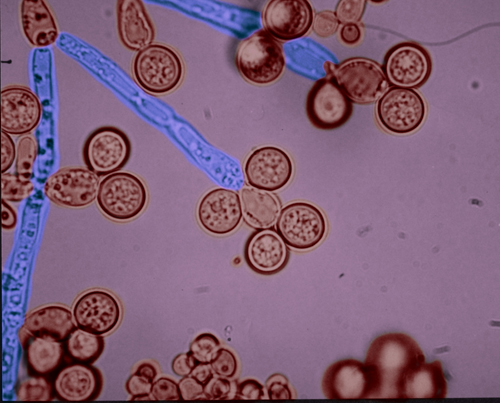Genome Sequence of Yeast Species Discovered by TCD Researchers Published
Posted on: 07 October 2009
The genome sequence of Candida dubliniensis, a species of yeast first discovered in 1995 by TCD researchers Professor Derek Sullivan and Professor David Coleman of the School of Dental Science has just been published in the online journal Genome Research. Named after the University and the city of Dublin, the genome sequence of C dubliniensis will allow researchers compare it to the available reference genome sequence of its more virulent relative, Candida Albicans, the result of which may improve our understanding of how Candida species cause disease.
Yeasts such as C albicans and C dubliniensis are microscopic unicellular fungi that have the capacity to cause life-threatening bloodstream infections in a wide range of medically compromised patients. The new sequence of C dubliniensis shows that it is not as capable as C albicans at causing disease although it shares 95% of its physical characteristics. By identifying the genetic differences specific to the related yeasts, researchers can begin to understand and thereby defend against these pathogens.

Candida dubliniensis, a species of yeast discovered by TCD researchers.
Speaking about the research findings, which are a result of a collaborative project with the Wellcome Trust Sanger Institute in Cambridge, Dr Derek Sullivan of TCD’s School of Dental Science said: “How two species as closely related as C albicans and C dubliniensis differ so much in their ability to cause disease has long been a quandary. The presence of expanded novel gene families in C albicans suggests that there are previously uncharacterised genes involved in candidal virulence, the study of which will enhance our understanding of Candida infections.”
Using the findings from the comparative genomics study, supported by funding from Science Foundation Ireland, work is currently underway in the Dublin Dental School and Hospital to investigate the precise role of these genes with the goal of ultimately developing better diagnostic and treatment strategies to deal with fungal infection.
